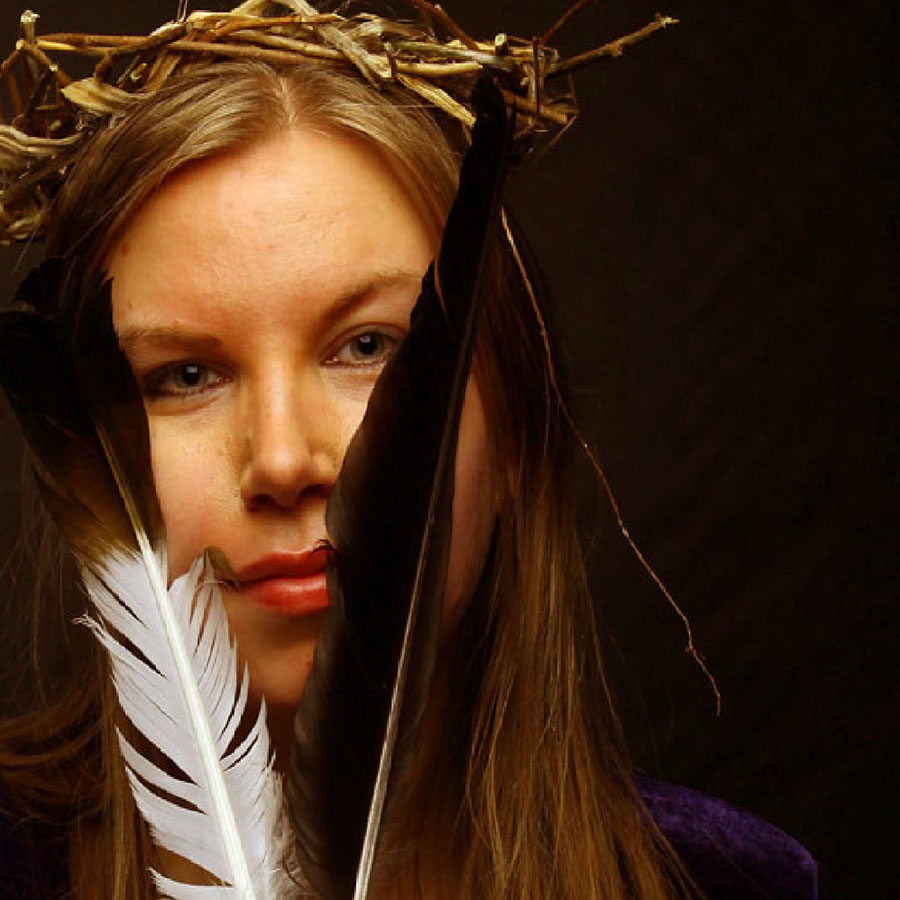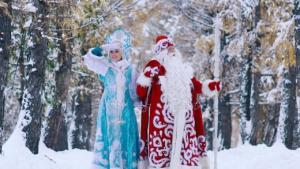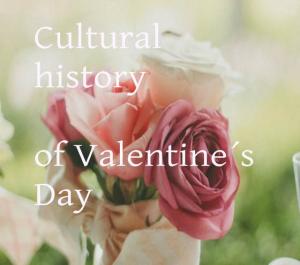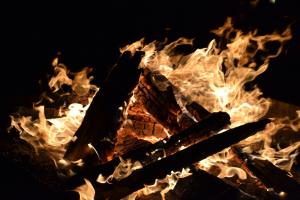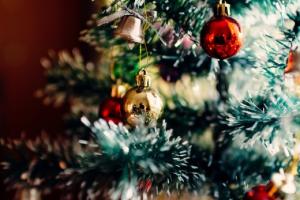
Throughout history, people in the northern hemisphere celebrated the Winter solstice between December 21st and 22nd. They decorated their homes, particularly doors and windows with ever-green tree branches to please their gods. In many cultures, it was believed that the sun itself was a god who got weak and sick during the long winter and returned in the spring, stronger each day. Winter solstice was believed to be a time when the sun returned to its strength. Evergreen plants served as a reminder that soon the sun would return and all life would flourish again.
One of the earliest records about winter solstice celebrations comes from ancient Egypt where people worshipped the sun god Ra, who had a head of a hawk and the sun as his crown. During the winter solstice, when Ra would recover from his illness ancient Egyptians decorated their homes with palm leaves which for them, symbolized life defeating death.
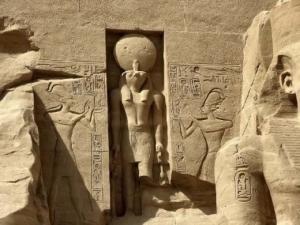
Roman Saturnalia
Saturnalia was one of the biggest festivals celebrated in ancient Rome between the 17th and 25th of December. Saturnalia was celebrated to honour Saturn, the god of agriculture. To honour the god and the fact that soon farms and fields would be green and fruitful, they decorated their homes with green branches. During Saturnalia no one could be prosecuted for breaking the law, killing, raping or injuring others. A lot of people took advantage of this time of lawlessness but Saturnalia was also a time to remember others by giving them small gifts.
In the early days of the Christian church, the birth of Jesus was set to be the last day of Saturnalia. This was an attempt created by the early Roman Christians to convert pagans to Christianity. There are many suggestions made about the time when Jesus was really born (they vary from Easter to Summer Solstice) majority of the modern-day church history scholars and researchers agree that Jesus was not born near the Winter Solstice.
Winter Solstice
Among Germanic, Celtic and Slavic cultures there was a habit to decorate homes with ever-green branches around the winter solstice. Many times green branches were used as the symbol of the world tree. The world tree is an early shamanic concept. The belief was that the world was made of several different layers and those layers were held together by the world tree. The number of layers varied between 3 to 17 depending on the belief system. In the northern hemisphere branches from ever-green trees also symbolized the rebirth of nature and everlasting life bringing hope to people about the coming spring.
In the Germanic Yule celebrations, a conifer tree was most popular because the trunk was used for making the Yule log. Spruce trees especially were connected to several highly respected forest deities and spirits. Pine cones and sprigs were used to decorate homes.
Around the area of the Baltic sea, people widely worshipped trees. In Finland, people had the custom to bring sacrificial gifts under the spirit tree during the winter solstice.

Christmas Tree and Reformation
The Catholic church did not approve pagan custom to bring tree branches inside. The Protestant church approved the custom and tree branches were seen as symbols of wealth. When in Catholic traditions native scenes were the official symbols of Christmas, the Christmas tree became the official holiday symbol for the protestants. According to the Bible, an angel appeared to the shepherds and told them about the birth of Jesus. This is why in Christian tradition there is either angel or a star on the top of the Christmas tree. Sometimes Christmas tree is told to symbolize the tree of paradise and Christmas balls represent forbidden fruits.
In the 16th century, Christmas trees received more popularity and even most puritan clergymen had to face the fact that the custom was here to stay. According to the legend German priest Martin Luther who became the founder of the Lutheran church, was on his way home to Wittenberg one winter night and he saw a beautiful spruce tree and a star shining bright above it. He was so touched by what he saw that he took one of the trees inside his home and put candles on the tree branches. The story was spread across his congregation and later on after the reformation, soon all protestant countries in Central Europe had their own Christmas tree tradition. The tradition spread into the United States in the 18th century together with German immigrants.
Christmas tree tradition arrived in Scandinavian countries in the 19th century. The first mention of a Christmas tree in Finland is from 1829. A baron from Helsinki bought eight Christmas trees to decorate his home with. The first people who adopted the Christmas tree tradition were clergymen and noblemen. It was not until the 20th century that the Christmas tree tradition spread to all Finnish homes.
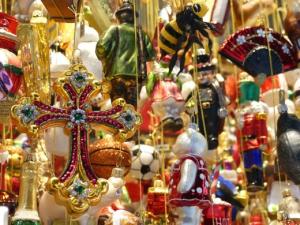
Decorations
Decorating Christmas trees started in Middle Ages. Baltic countries Latvia, Lithuania and Estonia (together with Scandinavian countries) were the last countries in Europe that were converted to Christianity. In Baltic countries merchants traditionally decorated tree branches for the winter solstice celebration. In the 16th century in Germany and in Switzerland the handcraft-er guilds decorated twigs with sweets and they were given as gifts for other guilds. Early Christmas tree decorations were all eatable, like apples, nuts and sweets. Nowadays the majority of Christmas ornaments are made of plastic and the topics vary a great deal. The most common ones are different kinds of Christmas balls, stars, angels and elves.
Before Christmas trees became the official symbol of Christmas it was a custom that was only reserved for the richest families. Some people might even have more than one tree. Many times Christmas tree was an exotic decoration. Sometimes people even had competitions with their neighbours on whose tree was the most handsome. Wealthy families might even have a Christmas tree in every room. Tiny trees were placed on shelves or hung on the ceiling. A big tree was placed in the living room and it was also a status symbol. More handsome tree the wealthier owner. When custom spread into the homes of the Middle class, their trees were usually small and placed into the middle of the table. When demand for the Christmas trees grew the size of the trees grew as well.
Christmas trees did not please all people. There were political and religious groups who banned Christmas trees and were convinced that they were an attempt to destroy people´s moralities. Trees were not always considered safe. Some of the arguments were accurate such as decorating trees with actual candles which might lead to fires. Electric lights became more popular in Christmas trees in the 19th century. The world´s first Christmas tree with electric lights was on display in New York in 1882.

